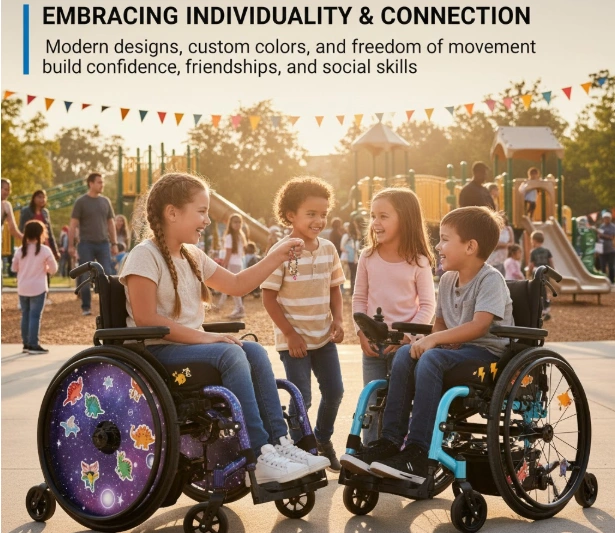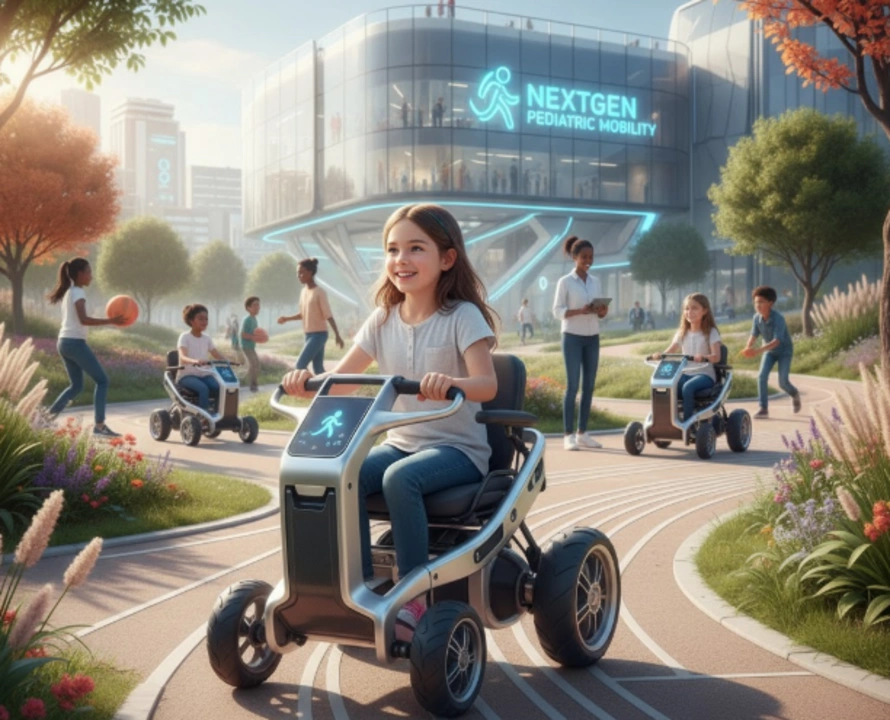The Next Generation of Pediatric Mobility: How Innovation is Redefining Independence for Children
In the past, mobility challenges often limited children’s freedom and confidence. But today, pediatric mobility is no longer just about moving from point A to point B — it’s about empowering a new generation of independence. Thanks to cutting-edge technology, smart design, and inclusive thinking, mobility devices for children now blend safety, comfort, and innovation in ways that were unimaginable just a decade ago.
A New Era for Pediatric Mobility
A few years ago, pediatric wheelchairs and mobility aids were basic and functional, designed mainly for transportation. They lacked flexibility, comfort, and personality. Many children couldn’t participate fully in school, playgrounds, or community activities simply because their equipment wasn’t adaptable to their needs.
Today, things have changed dramatically. Engineers and pediatric specialists have joined forces to reimagine what pediatric mobility can mean. Modern devices now feature ergonomic designs, motorized controls, and adjustable seating that grow with the child. These aren’t just medical tools — they’re confidence boosters that let children explore their world freely.
Smart Technology Changing the Game
Technology has revolutionized how mobility devices function. Powered pediatric wheelchairs now include intuitive control systems such as joysticks, touchscreens, and even eye-tracking sensors. These tools enable children with limited motor control to operate their wheelchairs independently.
Lightweight materials like carbon fiber have replaced heavy metal frames, making these devices easier to move and transport. With shock-absorbing wheels and adaptive suspension, children can travel smoothly across different terrains — from the classroom to the playground.
More advanced models even include AI-based navigation that automatically adjusts speed or detects obstacles. This means that kids can enjoy their independence safely while caregivers can monitor performance through smartphone apps.
Supporting Health, Growth, and Posture
Beyond convenience, pediatric mobility plays a huge role in physical development. The latest designs focus on proper posture alignment, pressure relief, and muscle health. Adjustable backrests and specialized cushions prevent strain and improve comfort for long-term use.
Regular movement promotes better muscle coordination and endurance. For children, this means improved participation in daily activities — from joining friends in class to playing sports. In short, pediatric mobility is not just about getting around; it’s about living actively and growing healthily.
Emotional and Social Benefits for Children

Freedom of movement brings more than physical independence — it transforms how children see themselves. When kids can move without constant help, they feel confident, capable, and included.
Modern pediatric wheelchairs now come in custom colors, patterns, and designs so children can express their individuality. Something as simple as picking their favorite color or adding stickers can make them feel proud of their mobility device.
Being able to navigate playgrounds, schools, and community events also helps them form friendships and social skills naturally. Pediatric mobility empowers them to connect, communicate, and contribute — just like any other child.
The Rise of Smart Connectivity
One of the biggest leaps in pediatric mobility is the integration of smart connectivity. Today’s wheelchairs can connect with mobile apps, tablets, or wearable devices to track battery life, location, and activity levels. Some systems even alert caregivers if the wheelchair needs maintenance or a charge.
With the rise of Internet of Things (IoT) technology, pediatric mobility devices can automatically learn from usage patterns. This helps in creating personalized movement profiles that adjust speed and responsiveness based on the child’s environment.
| Feature | Benefit |
|---|---|
| Smart Sensors | Detect obstacles and adjust movement automatically |
| Mobile App Integration | Caregivers can monitor safety and performance |
| Lightweight Frames | Easier transport and better comfort |
| Custom Design Options | Encourages self-expression and confidence |
These innovations make pediatric mobility devices not just assistive tools, but interactive companions that grow alongside the child.
Customization and Inclusive Design
Every child is different — and so are their mobility needs. Modern pediatric devices now come with modular parts, adjustable seating, and expandable frames that can adapt as the child grows.
This customization ensures comfort and functionality at every stage of development. It also means families don’t need to replace devices frequently, saving costs while maintaining safety.
Inclusive design is equally important. Mobility aids today are built to fit into schools, playgrounds, and public areas, ensuring that no child feels left out. By prioritizing inclusion, these innovations help create environments where all kids can thrive together.
Rehabilitation and Therapeutic Applications
Pediatric mobility isn’t limited to daily life — it’s becoming a vital part of therapy and rehabilitation. Physical and occupational therapists use advanced wheelchairs and walkers to build coordination, balance, and motor control in children.
Interactive features such as games and feedback sensors make therapy more engaging. When movement becomes fun, children are more likely to participate actively, accelerating recovery and skill development.
Therapeutic mobility devices also support cognitive and sensory growth, helping kids learn problem-solving, navigation, and body awareness through interactive activities.
Looking Toward the Future of Pediatric Mobility
The next wave of innovations will likely focus on AI-driven customization, lightweight robotics, and eco-friendly materials. Experts predict future pediatric mobility aids will self-adjust based on terrain, child’s energy level, or activity type — creating a truly seamless experience.
Beyond design, the focus will remain on inclusivity and empowerment. Pediatric mobility will continue to evolve from being a clinical necessity to a symbol of freedom, creativity, and independence.
Conclusion
The future of pediatric mobility is bright, hopeful, and full of innovation. What once started as simple assistive equipment has now become a powerful bridge toward independence and inclusion.
These modern mobility devices help children explore, play, learn, and live with confidence. And as technology continues to advance, we’re not just creating better wheelchairs — we’re creating a world where every child can move freely and dream without limits.
FAQS
1. What is pediatric mobility?
Pediatric mobility refers to devices and technologies that help children with movement challenges gain independence and comfort in daily life.
2. How does technology improve pediatric mobility?
Technology introduces smart controls, AI-based navigation, and lightweight materials, making wheelchairs safer and easier to use.
3. Are pediatric mobility aids customizable?
Yes, modern designs include adjustable frames and personalized features that adapt to a child’s growth and preferences.
4. Can mobility aids help in therapy?
Absolutely. They support physical therapy, motor skill training, and overall cognitive development in children.
5. What’s the future of pediatric mobility?
The future lies in AI integration, smart tracking, and inclusive designs that promote full independence and equal participation.







